Share the post "What is a Defender in Soccer? (Vital Position)"
To win a soccer game you need to score goals, but if you concede more than you score, you’re on the losing side. The balance between defense and attack is important in soccer.
A defender is a key part of a soccer team, blocks and tackles are celebrated like goals. A defender ultimately stops attackers from shooting at their goal.
There’s much more to defending in soccer – here are a few points I’ll cover;
- A defender’s role
- Key skillsets for defenders
- How to develop defenders
- Some of the world’s best defenders
Every player on a team needs to defend, so let’s find out what it takes to defend like a pro!
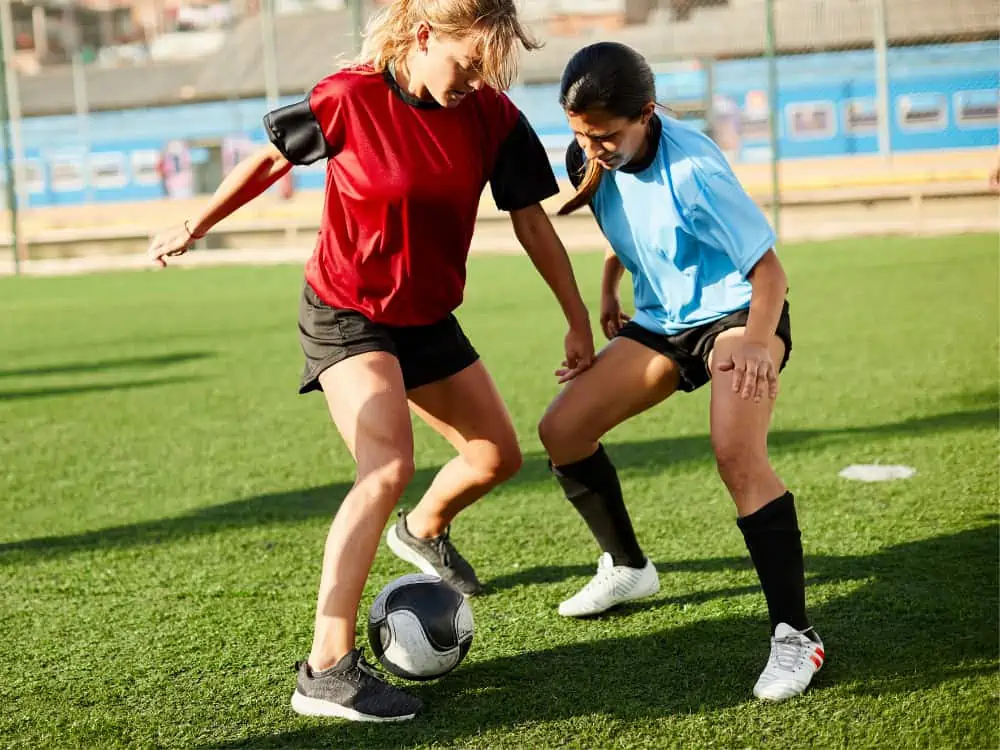
- What Does a Defender in Soccer Do?
- What are Defenders Called in Soccer?
- Is a Goalkeeper a Defender?
- Words to Describe a Defender in Soccer
- Where Does a Defender Stand in Soccer?
- Is Being a Defender in Soccer Hard?
- Qualities of a Good Soccer Defender
- What Do Soccer Coaches Look for in a Defender?
- How Do You Train a Defender in Soccer?
- Best Defender in Soccer
- In Defense
What Does a Defender in Soccer Do?
The simplest answer to “what does a defender do in football” is that they help prevent the opponent’s attack. The primary objective of a soccer defender is to stop the other team from scoring.
In reality, there are many aspects to a defender’s job. Defensively alone, defenders will:
- Direct other teammates to help mark opponents
- Battle 1v1 against incoming attackers
- Take the ball away from the opponent
- Block passes, crosses, and shots from the other team
- win balls in the air (long balls, crosses, corner kicks)
- Challenge 50/50 balls
Those are just some examples of defensive efforts that defenders make. However, that is not their only job. They must also participate in the attack by
- Keeping the ball after winning it
- Starting the attack
- Providing an outlet for midfielders to pass back
- Picking moments to engage in the attack via dribbling
- Crossing the ball (outside backs)
As a defender, I try to keep clean sheets
Virgil van Dijk of Liverpool
Do Defenders Score in Soccer?
Defenders are likely to score on set-plays and corners kicks. The height advantage and determination of a defender gives them a great chance to score and many defenders score vital goals.
The main job of a defender is to, well, defend. This means their primary job is to stop the other team from scoring. While it is more difficult because they tend to be further from the goal and less involved in the attack, defenders can still score in soccer.
In most modern systems, outside defenders actually play a highly attacking role. Many have pace and talent on the ball, pushing up the wing of the field and sending in crosses, shots, etc.
Additionally, some defenders may be in the box during free kicks or corner kicks. This is a prime scoring opportunity that some defenders can capitalize on.
Another way a defender might score is on a penalty kick. Teams will choose a solid shooter for penalties, regardless of position. Oftentimes, attacking players are more comfortable with penalties, but many defenders have scored on PKs.
Here’s an awesome goal of USWNT center-back Becky Sauerbrunn scoring with a header off of a free kick play
What are Defenders Called in Soccer?
Most teams play with three or four defenders. The exact name for a defender can vary depending on the formation, location of the player, and coaching style.
Here are some common terms for defenders:
- Center back – Number 4 or 5
- Central defender – Number 4 or 5
- Outside back – Number 3 or 2
- Left-back – Number 3
- Right back – Number 2
- Right defender – Number 4 or 2
- Left defender – Number 5 or 3
- Fullback – Number 2 or 3
The defensive positions above and their numbers is a typical for a formation with 4 defenders at the back – see the image below;
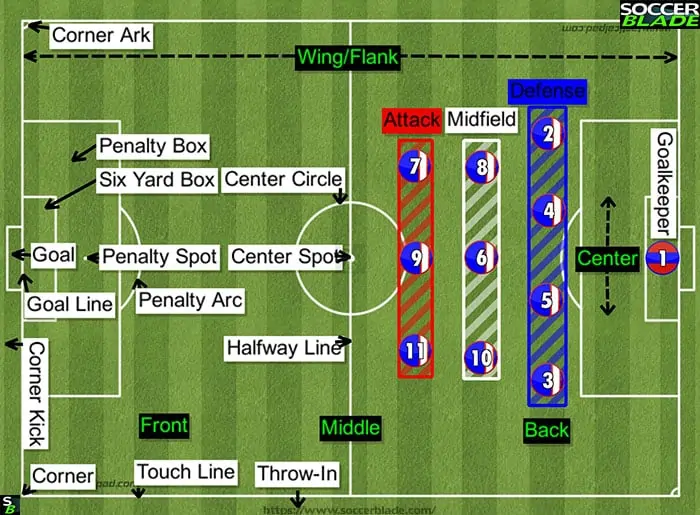
What is Fullback Soccer? (Wide defender)
Fullbacks in soccer are wide defenders, they play either side of the center backs. Their role is to defend against the winger (wide attackers).
“Fullback” is another name for a defender in soccer. However, the term overall is fairly dated and not as commonly used anymore. Even when it was used, the fullback was more commonly used in the U.S. and other countries.
In the past, the fullback’s main duty was to defend their goal, but in recent years a fullback can be a crucial part of attacking play. They firstly must protect their side of the field and cover the center back on their side.
Then when the team has the ball, they combine play with the winger (attacking wide player) and create chances by making overlapping runs and crossing in the box to the attacker.
One of the best-attacking fullbacks in the game today is Trent Alexander-Arnold, who plays for Liverpool FC in the EPL. He creates more chances than most wingers! Take a look;
What Is a Center-Back? (Central Defender)
Center backs are the heart of the defense, they are the last players to defend their goal. Usually tall and fast, they need to be equipped to stop whatever striker is playing.
A center back can start attacks with through balls to the attackers and they are dangerous in the opponent’s box.
A central defender must enjoy doing everything they can to protect their goal. A blocked shot heading for the top corner is enjoyed as much as scoring a goal.
Key communication with the goalkeeper and fullbacks are important to move the line of the defense out up the field to create a high line. The high line compacts the team and creates an offside trap for the attackers.
A close link with the defensive midfielders is important so there is little space in between the defense and midfield. The following video, really sums up what it takes to be a defender – would you do this…
Is a Goalkeeper a Defender?
The primary objective of a defender is to prevent the opponent from scoring, and this is what goalkeepers also do. So, is a goalkeeper a defender?
Not exactly. A goalkeeper is a defensive player, but they are not a “defender.” This is the same way both midfielders and forwards may be considered “attacking” players. Rosters, awards, etc, often differentiate between the two.
For example, in U.S. college soccer, there are conference awards. The Big 10 had separate awards for defender of the year and goalkeeper of the year (as well as a midfielder of the year and forward of the year).
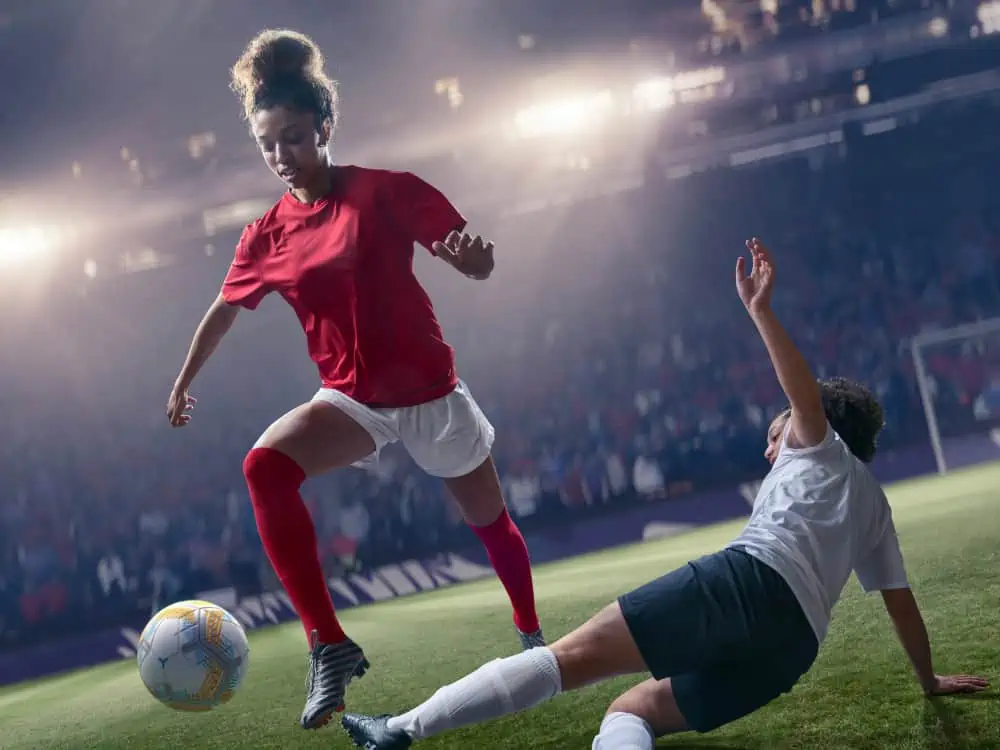
Words to Describe a Defender in Soccer
Defenders come in a huge array of varieties. They may have very different physical attributes as well as individual skillsets.
Still, here are some of the top words that come to mind when thinking of this position:
- Tenacity
- Gritty
- Mental toughness
- Tough
- Fearless
- Unsung hero
Is Defense a Good Position in Soccer?
Many soccer players love to score goals, which is great. However, other players, (myself included) absolutely love playing defense.
In soccer, just like any sport, each position has its role, along with pros and cons. There are many things that make defense a good position, including the ability to save your team in big moments.
Ultimately, a team only needs 1 goal to win, but they must prevent more chances than that. This is part of what makes defense such an action-packed position most of the time.
Where Does a Defender Stand in Soccer?
The game of soccer moves quickly and changes constantly. Therefore, there’s no set answer for where a defender should position. This all depends on who has the ball, where the ball is, the team shape, and much more.
However, there are a few keys to how a defender should stand in soccer. For one, the defender should be closer to their goal than the opponent (except for when trying to force offside). As a defender, you do not want the other team’s attackers to get behind you and have clear access to your goal.
Another tip is that defenders should stand ready to pounce. Take an agile stance, on your toes, and be ready to react at any moment. Rather than facing directly forward, your body should be at a slight angle where you can see the ball, the player, and your goal while being in the correct position to run.
Take a look at these defensive clips for a better understanding of how a defender should stand and position themselves during a game
Is Being a Defender in Soccer Hard?
Defending is difficult when you are facing strong opposition. If your team cannot out from the back and retain the ball, the ball will back towards your goal. It takes more energy to defend than attack.
No position is “easy”, every single one has challenges. So, of course, being a defender in soccer is hard.
One thing that makes defense difficult is the pressure. As a defender, your aim is to be flawless. An error in the back could mean conceding a goal, which can cost your team the game.
Another challenge is a lack of recognition. As mentioned, defenders must be nearly perfect to perform well for their team. Yet, a great defender looks like they have an easy job. They rarely get the recognition when their team wins, and this can grind on your mentally.
Defending itself is also challenging. You must react to other players and make up for mistakes on your team. This is mentally and physically demanding.
Where is the Weakest Soccer Player?
Teams of all levels must sometimes play with weaker players. For youth teams, this is a common occurrence, as all kids need a fair chance to play. But even the pros may have to put a “weaker” player on the field if dealing with injuries or other issues.
So, where does the weakest soccer player go?
Absolutely not in defense.
Some inexperienced coaches may be tempted to place a weaker player in the back because they want to score. Remember the part about winning with 1 goal but needing to stop more than one attack?
Yes, it may be harder to score with a weaker player up top, but you do not want a weaker player closer to your goal.
Even professional teams will adjust their lineup by pulling back a stronger attacking player if they have a whole in defense. Defense is not where you want a weak player, as this can expose you to getting scored on.
Qualities of a Good Soccer Defender
There are many different “types” of defenders out there, all with different qualities. Some defenders, like USWNTs Crystal Dunn, are athletic powerhouses. They are fast, agile, powerful. These defenders chase down opponents or fly up the sideline as part of the attack.
On the other hand, you may have a taller, lankier defender. These defenders typically win many challenges in the air. They may have an impeccable long ball, great foot skills, and smart positioning.
Those are just a couple of examples. While opinions may vary, here are some qualities great defenders have:
- Speed (you need this to recover and save your team from counterattacks)
- Grit. Defending is a mentality.
- Good long balls or clearances.
- Ability to read the game quickly defensively.
- Composure on the ball.
- Handles pressure well.
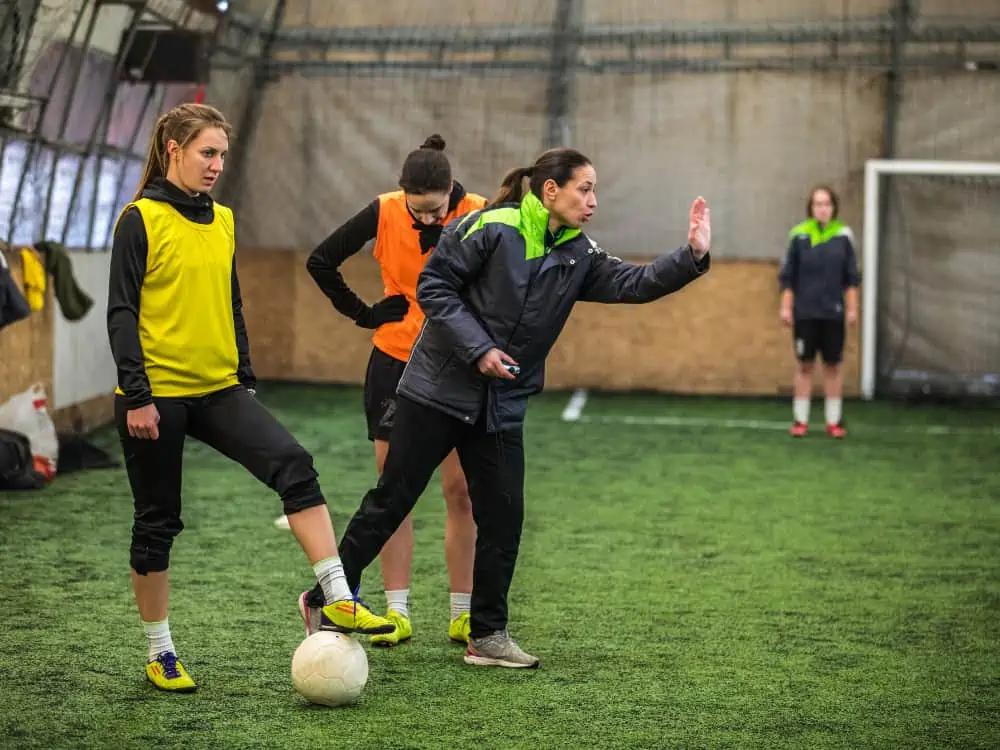
What Do Soccer Coaches Look for in a Defender?
Some coaches look for the tenacious athlete, others look for a highly technical defender to start the attack. Different coaches also have different ideas of what makes a good defender.
What a coach looks for will depend on the style of the team and the way they like to play. This is why a defender could be outstanding for one team/league, but struggle in the next.
Overall, here are some things coaches will look for in defenders:
- Knowledge of the game, tactical understanding.
- Stays cool under pressure/ in heated moments.
- Eager to improve.
- Good defensive understanding and execution.
- Solid skill on the ball.
- Great communication on the field.
As a defender, you can be many shapes and sizes. You can be short and fast. Or you can be tall and jump high. It doesn’t matter. The only necessity is that you are confident when you take the pitch – because every week there is a new challenge.
Fabio Cannavaro, Italian Football Coach
What Makes You a Good Defender in Soccer?
Good defenders are not the same, many exhibit different skills and different weaknesses.
Ultimately though, the most important quality of a good defender is good defending.
Defenders must be able to win the ball from attackers. They must be able to thwart counters, battle in the box, and help keep the ball out of the net.
How Do You Train a Defender in Soccer?
Even the best professional defenders had to start somewhere. At some point, they learned the tools that they now have in their arsenal for defending.
But, teaching a player how to play as a defender can be complicated. The key is to build up the skills over time. Just like we start teaching young kids basics that they will later use to strike a ball, we must begin to teach them basics they will use to play defense.
Here are some ideas for how to train a defender in soccer:
- Work on agility, especially reactive agility in small paces.
- Teach them about all positions and overall strategy.
- Break down the stages of defense.
- Work on 1v1 defending.
- 4v2 games with a focus on the 2 defending.
- Work on back 3 or 4 defensive shapes.
- Play offense vs defense at practice.
- Incorporate game-like scenarios and situations.
Check out these ideas from IMG Academy for training defenders;
What are The 3 Stages of Defense?
As mentioned, you should teach players about the 3 stages of defense. This will help them better understand the tactic and resolve any issues they may have.
Stage 1: Approach.
This is how the defender will approach the attacker. The approach will vary based on the distance to the attacker and whether or not the attacker already has the ball or is going to meet the ball.
Overall though, the approach should be as fast as possible and with a slightly curved shape. The curved run helps cut off an angle and start to direct the player in one direction.
Stage 2: Breakdown
After closing the space with the attacker, the defender must break down their run and be ready to react. If they continue running at full force, they’ll either collide with the attacker or expose themselves to be beaten in one touch.
Defenders should begin to slow their run within a few yards of the attacker. They should remain agile as they break. Additionally, their position should be slightly to one side of the attacker and angled in a way that forces the attacker one way.
Step 3: Win the Ball
The last step is to win the ball. The LAST step! This is key to reinforce, as many players get beat by trying to rush in and win the ball without the other steps (hint: that doesn’t usually work out).
To win the ball, the player can block the attacker’s touch, or they can separate the attacker from the ball by getting their body between the attacker and ball. The key at this stage is to be patient and look for the right opportunity to win the ball.
Best Defender in Soccer
After all this talk about defenders, you may be wondering “who is the world’s best defender in football?”
The answer is not so simple. For an attacking player, we may look at who has the most goals or overall points. But for defenders, scoring is not an indication that they are the best at their position.
There’s a lot of debate about who the best male defender is, but many people will say Dutch defender Virgil van Dijk of Liverpool. He averages 3.5 clearances per game and .9 interceptions per game. He has a 71% tackle success rate and has helped his team earn 76 clean sheets.
According to ESPN’s ranking of the top 50 female soccer players, Lucie Bronze from Manchester City/ England is the best female defender. She is the highest-ranking defender on the list. She was the first player (at all, male, female, forward, defender, etc) to earn the award for FIFA’s The Best. She has 83 caps and 9 goals for the English National Team.
Here are a few of the other all-time great defenders in men’s soccer:
| Name | Position | Team | Stat | Awards |
| Jérôme Boateng | CB | Lyon/ Germany | 31 aerial duels, 40 tackles | 2016 Footballer of the Year in Germany |
| Diego Godín | CB | Cagliari/ Uruguay | 1.6 aerials won per game | UEFA Europa League Squad of the Season, 2016 La Liga Best Defender |
| Mats Hummels | CB | Dortmung/ Germany | 2.3 tackles won per game, 2.73 interceptions per game | 3x Bundesliga Team of the Season, UEFA Europa League Squad |
| David Luiz | CB | Flamengo/ Brazil | 80% success rate for tackles | Ligue 1 Team of the Year 2x, PFA and ESM Team of the Year, FIFA World Cup Silver Ball 2012 |
| Gerard Piqué | CB | FC Barcelona/ Spain | 132 aerial duels and 28 tackles in 2021/2022 so far | La Liga Best Defender 2010 |
| Raphaël Varane | CB | Manchester United/ France | 78 aerial duels and 38 tackles so far in the 2021/2022 season | Chevalier of the Légion d’honneur in 2018, 2011 FIFAPro World11 |
| Giorgio Chiellini | CB + LB | Juventus/ Italy | 2.3 aerials won per game average | Juventus Player of the Year in 2009, Juventus Greatest XI of All Time |
| Thiago Silva | CB | Chelsea/ Brazil | 75 aerial duels and 37 tackles won so far in the 2021/2022 season | FIFA World Cup Dream Team, FIFA World Cup All-Star Team |
| Sergio Ramos | CB | PSG/ Spain | 1.3 aerials won per game average | FIFA FIFPro World11 10 times |
| Virgil van Dijk | CB | Liverpool/ Netherlands | 71% tackle success rate, 876 aerial battles won all time | Ballon d’Or and The Best FIFA Men’s Player in 2019 |
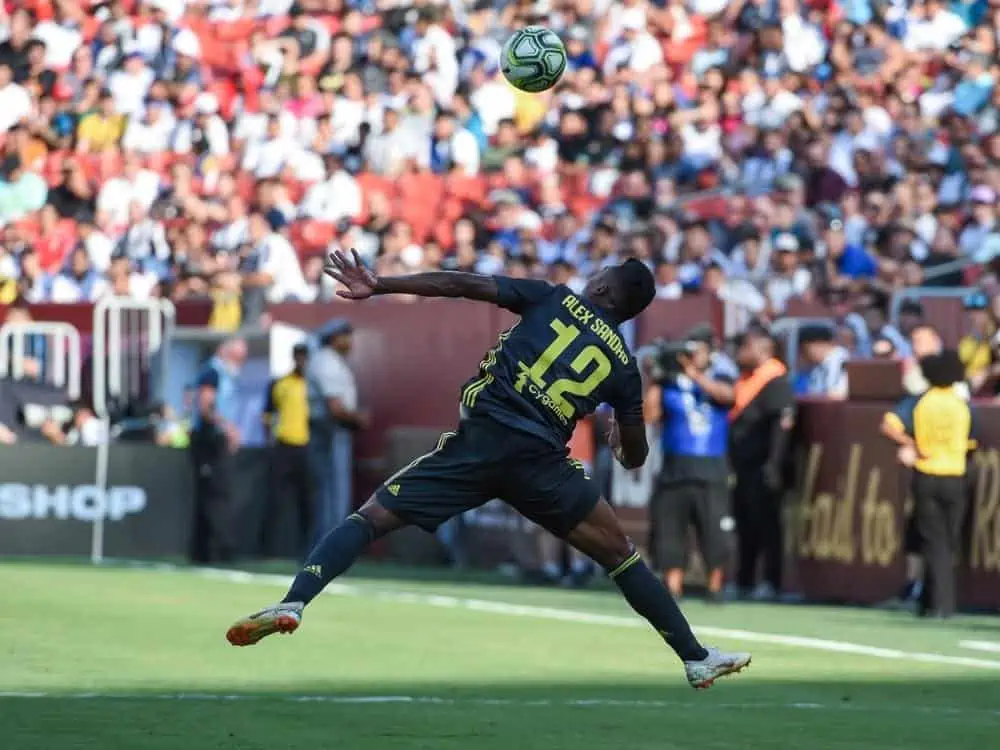
In Defense
The job of a soccer defender is to keep the ball out of the back of the net. They focus on stopping the opponent’s attack, but defenders also begin their team’s attack and can even score goals!
Ultimately, this position requires mental and physical toughness to succeed at any level.
Share the post "What is a Defender in Soccer? (Vital Position)"
Joel is a seasoned soccer journalist and analyst with many years of experience in the field. Joel specializes in game analysis, player profiles, transfer news, and has a keen eye for the tactical nuances of the game. He played at various levels in the game and coached teams - he is happy to share his insight with you.



